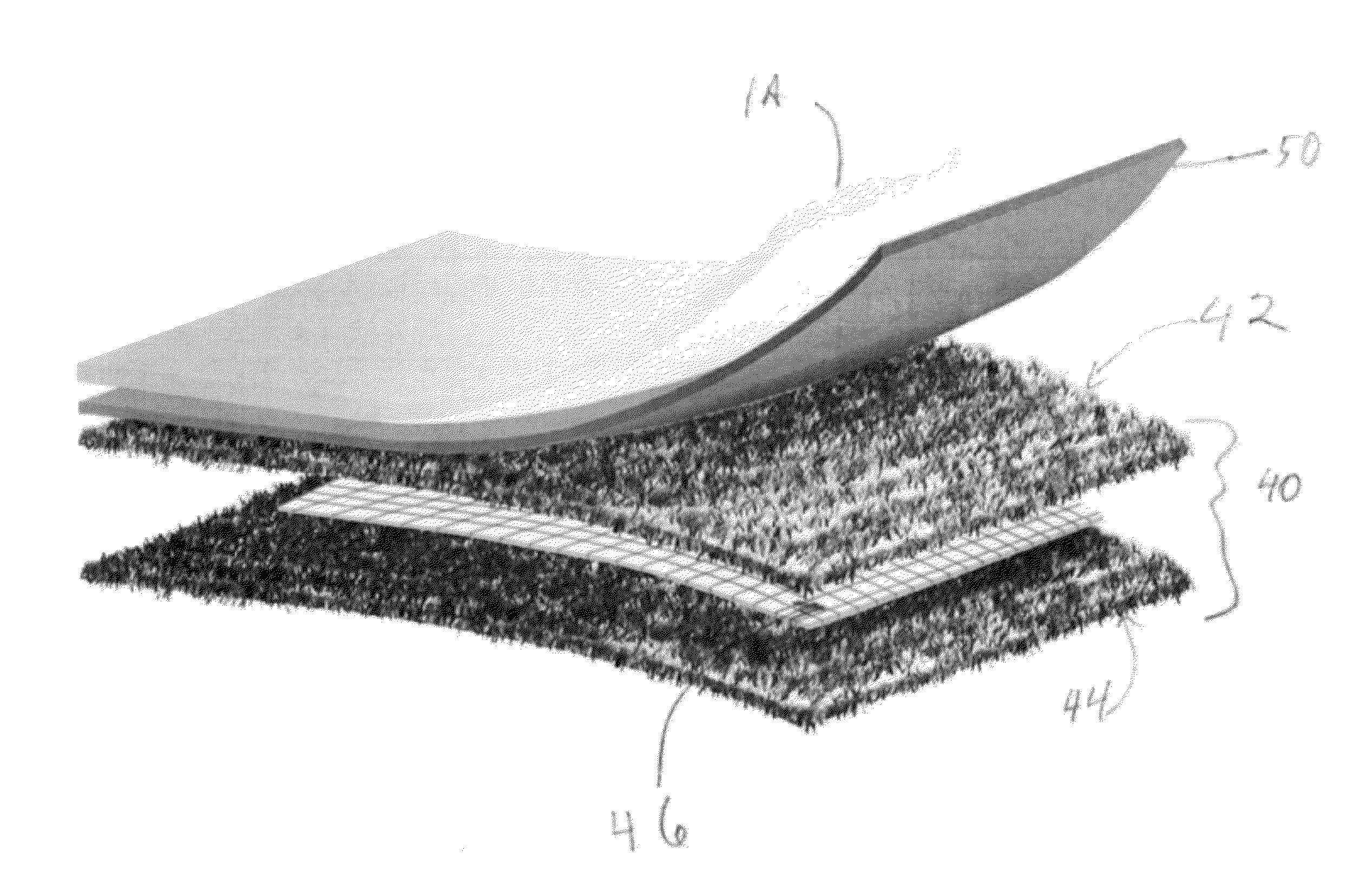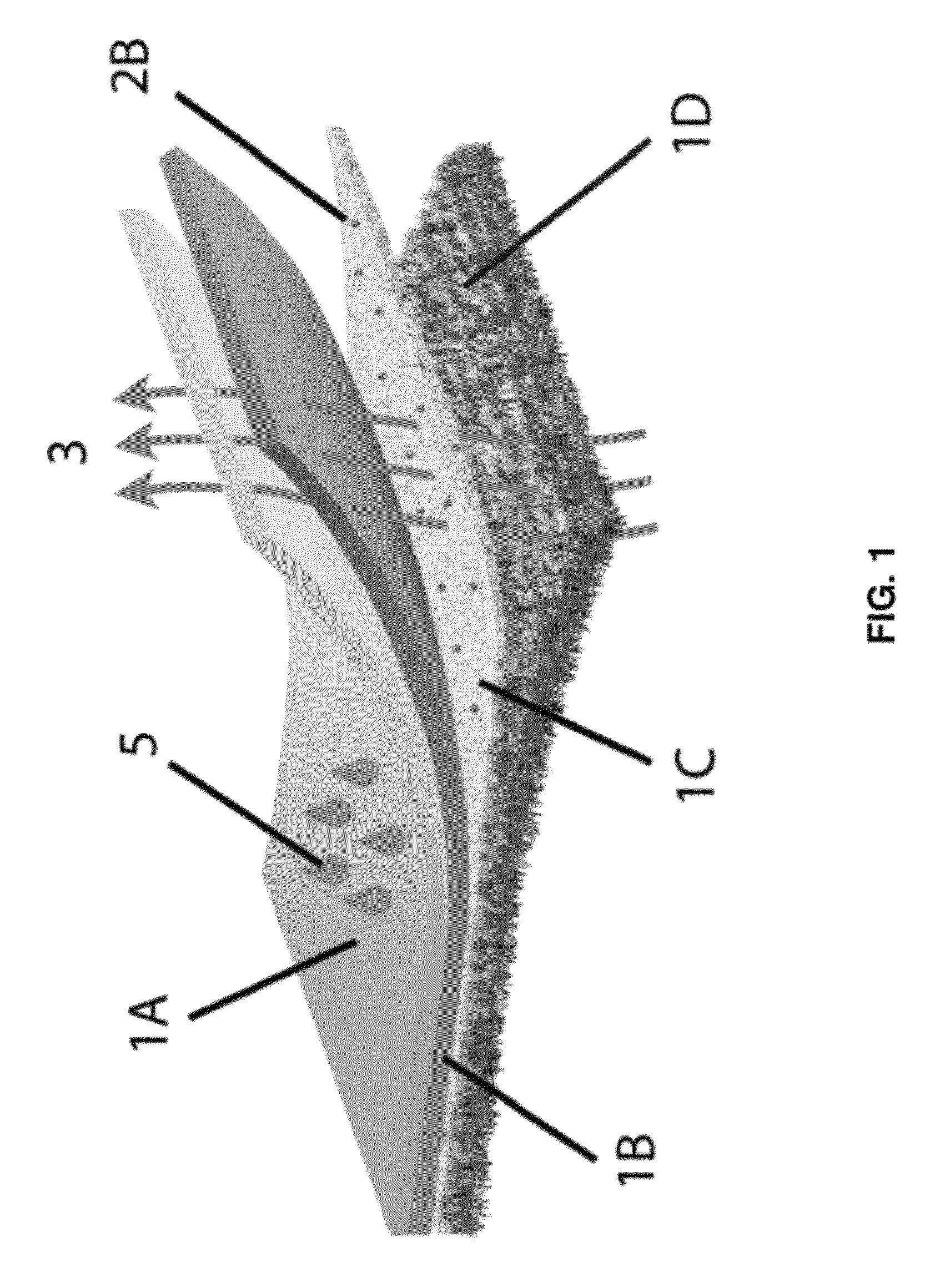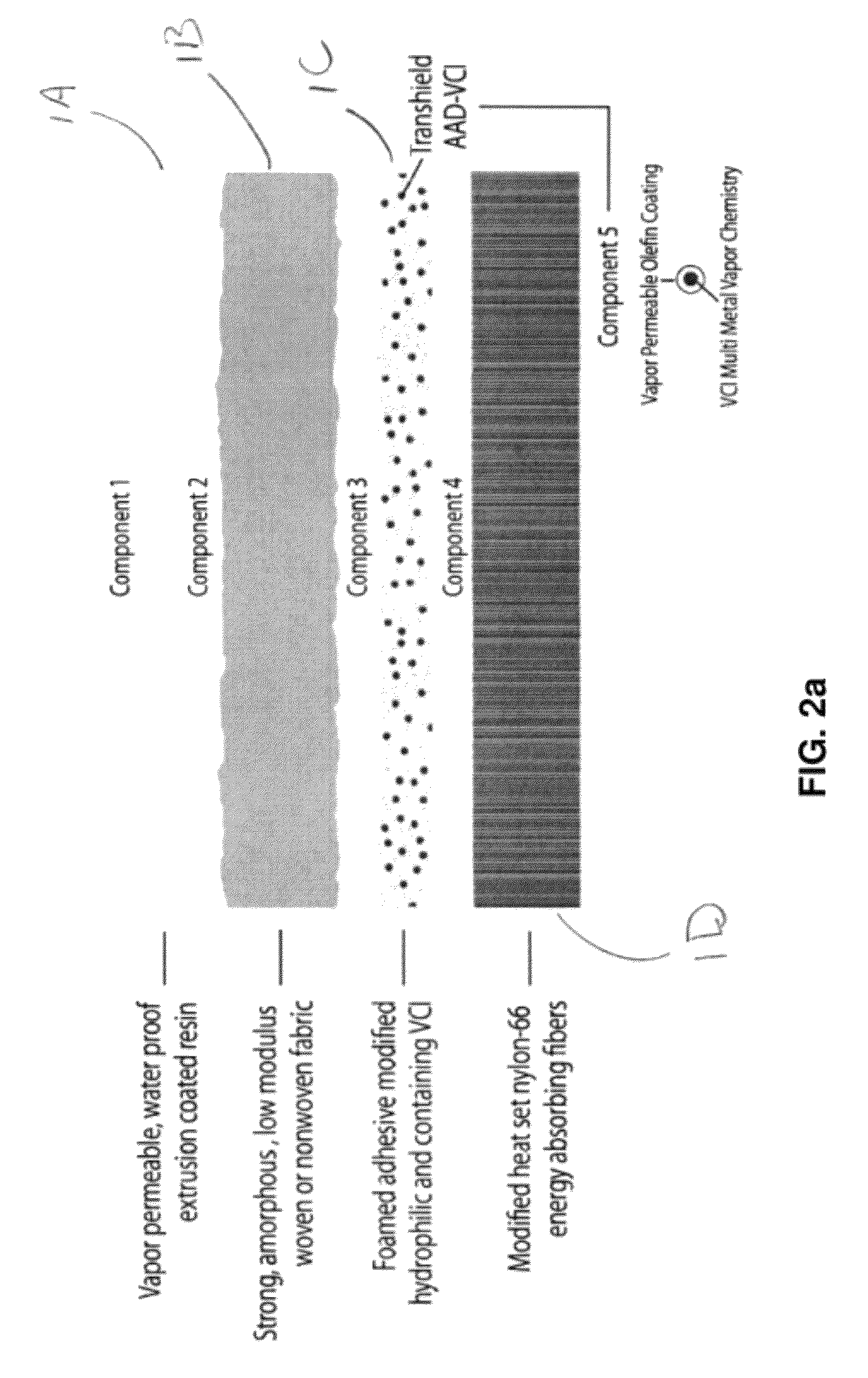Vapor permeable fabric constructs
a fabric and fabric technology, applied in the field of vapor permeable fabric constructs, can solve the problems of not being able to build shelters at all locations, requiring a lot of capital, and spending a tremendous amount of money, time and manpower, and achieves high breathability, high efficiency of use, and soft touch
- Summary
- Abstract
- Description
- Claims
- Application Information
AI Technical Summary
Benefits of technology
Problems solved by technology
Method used
Image
Examples
example 1
Flocking a Porous Fabric
[0087]In a non-limiting example, a fabric construct is prepared as outlined here. The flocking fibers are 1.8 denier round semi-dull nylon 6,6 flock fiber that is 1 mm (39.37 mils) in length. The fiber density upon flocking in an illustrative embodiment is about 61 gsm (1.8 oz / sq yard or 0.1125 lbs / sq yard). The flocking operation as it takes place at Spectro Coating Corporation in Leominster, Mass. starts with a fabric—woven or nonwoven—that is preferably printed on one side. An adhesive pre-coat is then applied to the fabric on the side opposite the print. The adhesive pre-coat most preferably has a blow ratio of 5:1. The pre-coat add on rate most preferably is about 0.5 oz / sq yard (0.031 oz / sq yard or 16.95 gsm). Following the application the pre-coat gets dried at 280° F. Upon drying the pre-coating seals the fabric on the applied side and acts as a primer between the fabric and the top coat adhesive. The topcoat is applied on the same side as the pre-coa...
example 2
Coating a Flocked Fabric
[0090]The flocked fabric of Example 1 is extrusion coated by a 3 mil thick mono-layer polymer blend that is made up of, by non limiting example, 50% Elvaloy™ AC 1224, 40% Entira™ Breathe and 10% Fusabond™ FB556 by polymer weight, plus a weathering package as within the ranges given Table 1 above.
[0091]The extrusion process settings were; melt temperature at 473° F., Chill Roll at 75° F., nip roll at 100 psi, corona treatment at 5 kW and line speed of 75 feet per minute.
PUM
| Property | Measurement | Unit |
|---|---|---|
| length | aaaaa | aaaaa |
| length | aaaaa | aaaaa |
| thickness | aaaaa | aaaaa |
Abstract
Description
Claims
Application Information
 Login to View More
Login to View More - R&D
- Intellectual Property
- Life Sciences
- Materials
- Tech Scout
- Unparalleled Data Quality
- Higher Quality Content
- 60% Fewer Hallucinations
Browse by: Latest US Patents, China's latest patents, Technical Efficacy Thesaurus, Application Domain, Technology Topic, Popular Technical Reports.
© 2025 PatSnap. All rights reserved.Legal|Privacy policy|Modern Slavery Act Transparency Statement|Sitemap|About US| Contact US: help@patsnap.com



